From April 22 to Nov. 5, 2023, Venice ’s Ocean Space, inside the deconsecrated church of San Lorenzo, is hosting Thus waves come in pairs, an exhibition that includes two new commissions debuting at Ocean Space in Venice for the 2023 exhibition program, curated by Barbara Casavecchia, an independent curator and writer living between Venice and Milan. The exhibition features a meeting between American-Lebanese artist and Paris resident Simone Fattal and Berlin-based art duo Petrit Halilaj & Álvaro Urbano. Halilaj & Urbano’s new installation is co-commissioned by TBA21-Academy and Audemars Piguet Contemporary.
The exhibition Thus waves come in pairs (“Waves come in twos”), whose title is taken from the poem Sea and Fog (“Sea and Fog”) by Etel Adnan, aims to emphasize the need to reflect with and through plurality and exchanges, hallmarks of the third cycle of the Curatorial Fellowship “The Current” (2021-23), led by Barbara Casavecchia and focusing on Mediterraneans, which with this exhibition and its public program comes to a close. In September 2021 “The Current III” emerged at Ocean Space as a transdisciplinary exercise in perception aimed at supporting situated projects, collective pedagogies and voices along the Mediterranean shores across the fields of art, culture, science, conservation and activism. It has evolved into the generative format of walks, performances, podcasts, conversations and field trips, and built platforms for collaborative thinking (available at Ocean-Archive.org: ocean-archive.org/collection/286). The research journey, inspired by a conversation between Etel Adnan and Simone Fattal, resulted in the volume Thus Waves Come in Pairs. Thinking with the Mediterraneans, published by Sternberg Press, with contributions by Jumana Emil Abboud, Omar Berrada, Barbara Casavecchia, Pietro Consolandi, Övül Ö. DurmuÅŸoÄŸlu, Petrit Halilaj & Álvaro Urbano, Zeyn Joukhadar, Ibrahim Nehme and Giovanna Silva, with a foreword by Markus Reymann.
Mediterraneans are plural and polycentric places of knowledge production, where epistemic questions about who creates the narrative, from what perspectives and shores, remain central. The exhibition project is an evolution of Barbara Casavecchia’s site-specific approach focused on situated art practices and local ecological knowledge. Focused on the rapid climatic changes affecting the shores of the Mediterranean at a rate 20 percent greater than anywhere else on the planet, with the expansion of areas affected by droughts, altered water cycles and the proliferation of heat waves, The Current III invites us to reorient and register “the limits of our cognitive apparatuses,” as Iain Chambers and Marta Cariello write in their essay “The Mediterranean Question.” Through the works created for the exhibition, Simone Fattal and Petrit Halilaj & Álvaro Urbano tell us stories of imaginary futures, in which our understanding of the world is transformed by encounters with other species, and invite us to listen to the multiplicity of intelligences.
Simone Fattal’s installation Sempre il mare, uomo libero, amerai! (from the poem Man and the Sea by Charles Baudelaire) describes the waves of the sea as a mirror of the soul. In the original French text, “la mer” (the sea) is a feminine entity that begets and nurtures. The work is an invitation to lay a loving gaze on nature, of which we are a part, and to meditate on the constant changes that bind us. Two sculptures occupy the empty niches of the large Baroque altar. In the background of a mirrored surface, a roundel bears the well-known exhortation in ancient Greek γνῶθι σεαυτÏŒν (gnÅthi seautón, know thyself), inscribed in the temple of Apollo at Delphi. The other niche houses Young Boy, a figure of a young man who seems to question us about the future.
Bricola, a large ceramic sculpture with rich natural hues (inspired by the eponymous Venetian wooden poles that guide boats in the lagoon ecosystem), evokes navigation. The two monumental figures, separated and joined by a Golden Sea in glass plates, are Máyya and Ghaylán, a pair of lovers celebrated in classical Arabic poetry, as well as in tales and legends spread throughout the Islamic world. In the Persian Gulf, their story is that of two owners of a flotilla of pearl trading ships. Máyya’s fleet was more dynamic because of its fast boats. After much thought, one day Ghaylán found himself looking closely at a dragonfly and decided to have its wings imitate the speed of the winds so that his boats could be propelled by the speed of the winds: he had invented sails. In the future, will humanity still be able to find solutions by learning from nature?
Fattal’s installation also includes a series of pearly spheres made of pink Murano glass, on which the artist has engraved an inscription in lingua franca, a mestizo language that took terms from Italian, Arabic, French and Spanish, once spoken by merchants, pirates, prisoners and slaves along all shores of the Mediterranean. The fragment is taken from the text of the earliest evidence of lingua franca, the Contrasto della Zerbitana (The Conflict with the Woman of Djerba), a 14th-century anonymous poem about the verbal duel between a sailor and the mother of the maiden he mistreated, set on the island of Djerba, off the coast of Tunisia. Poetry is a fruitful vehicle of transmission from one language to another, from one culture and temporality to another. “Contrast” brings out the repressed complexities of the Mediterranean’s colonial past and neocolonial present, otherwise impossible to tell through a single story.
“There are many Mediterraneans: the geographical one, the historical one, the philosophical one ... the personal one, the one we swim in. Swimming is an experience, something that cannot be explained to those who have never swum. The feeling of being supported by water,” says poet Etel Adnan, Fattal’s companion until his recent death.
Berlin-based artists Petrit Halilaj (b. 1986) and Álvaro Urbano (b. 1983) present a new installation entitled Lunar Ensemble for Uprising Se as (“Lunar Ensemble for Uprising Seas”). The work creates an evolving ecosystem composed of more than 40 monumental sculptures of hybrid aquatic, terrestrial and aerial creatures placed under an ovoid moon, seemingly of the same materiality as the walls of the building. The installation is co-commissioned by TBA21-Academy and Audemars Piguet Contemporary and highlights the parallel missions of the two programs: to support artistic research and production while promoting dialogue and imaginative thinking for a global audience.
Lunar Ensemble for Seas in Revolt draws inspiration from a Spanish folk song entitled ¡Ay mi pescadito! in which little fish go to school at the bottom of the sea to study forms of survival and belonging. Through their installation, the artists explore cohesion, resistance or disharmony between different species or between living organisms and objects. The sculptures vary in shape and size, and no creature is realistic in this world. They are all in a state of evolution and exhibit diverse characteristics to survive in water, land and air. The metal coatings of the sculptures reflect sunlight on the walls, ceilings and floors of the church, altering the perception of space throughout the day. The sculptures also serve as musical instruments that, however, require human interaction to come to life and produce sounds from music boxes and other DIY techniques. Together, they attempt to compose a “melody” inspired by the song ¡Ay mi pescadito! and the excess of underwater noise, generated by human activities, which do not harmonize easily. The difficulty of achieving a perfect melody reflects the complexity of creating perfect synchrony in the material world.
Above the creatures, a large ovoid sculpture(Moon) hangs from the ceiling, floating in space. Theegg is covered with chalky material that hints at the church walls. Its materiality
symbolizes how everything can be reused and transformed as part of the cyclical nature of our world. It evokes the possibility of reimagining alternative forms of future living, transformation and parenting that break down that notion of fixed or stable “natural” identities that engenders systemic discrimination against queer individuals and families. Throughout the exhibition period, a cast of musicians and performers will activate the installation with varying durations and intervals. Between performances, seagull costumes worn by Halilaj and Urbano will be placed inside the exhibition, like sculptures. The seagulls are creatures of the Venice lagoon that observe the evolving ecosystem from above. They are the ones who coordinate the shared performance and bring together the creatures’ collective action.
To create this installation, Halilaj and Urbano worked closely with the curatorial team of Audemars Piguet Contemporary and Casavecchia. The two artists are also united in life while generally maintaining separate artistic trajectories. This project represents a unique opportunity to see the two artists at work on a joint monumental installation. Like previous works, this installation explores and negotiates the space between two realities: the human and natural worlds. Halilaj and Urbano’s practices are permeated with personal and playful elements that challenge social norms.
"Thus waves come in pairs (The waves come two by two) says the line of a poem by Etel Adnan, which gives the title to this exhibition, set up in the twin wings of Ocean Space,“ writes curator Barbara Casavecchia. ”It reminds us that we need to think and rethink in plural ways and practice forms of sharing. Waves carry and transmit energies. When they meet an obstacle, reflection arises. When they meet each other, an interference. They carry with them a movement that shatters binary separations such as land and water, wet and dry, human and non-human, that reshuffles and dissolves the fixity of boundaries and paradigms. “Water is the closest thing to our mind. We touch it and it is not there; we hold it and it runs away,” Adnan says again. Like waves - contemporary physics also tells us - we are the result of mutual interactions. From the Ocean we can learn that the relationship between living things and ecosystems is plural, fluid and constantly changing. Just like the climate, which around the Mediterranean basin is changing at a rate twenty percent faster than the rest of the planet. In this hotspot, heat is also moving in waves, above and below sea level, where temperatures continue to rise and livelihoods to change, along with water cycles and expanding aridity. Are we able to tune in to this ongoing movement and the delicacy of its balances, to protect them and adapt, along with the living things with which we coexist? With their works, created for the exhibition, Simone Fattal and Petrit Halilaj & Álvaro Urbano tell us stories that lead us to imagine futures in which our understanding of the world is transformed by encounters with other species. They invite us to listen to the multiplicity of intelligences."
Open: Wednesday through Sunday 11 a.m. to 6 p.m. Free admission. For information go to the Ocean Space website.
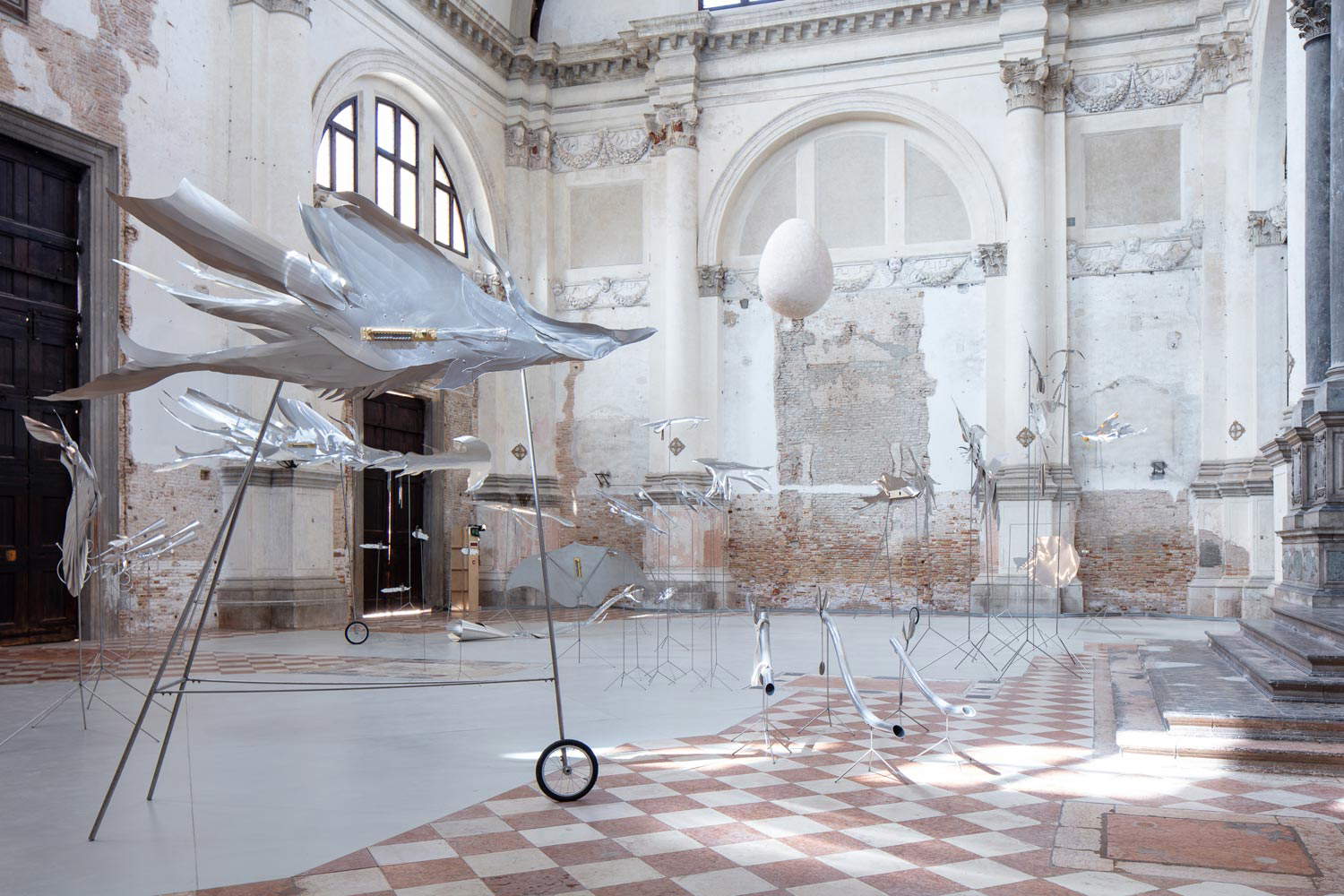
 Thus
Thus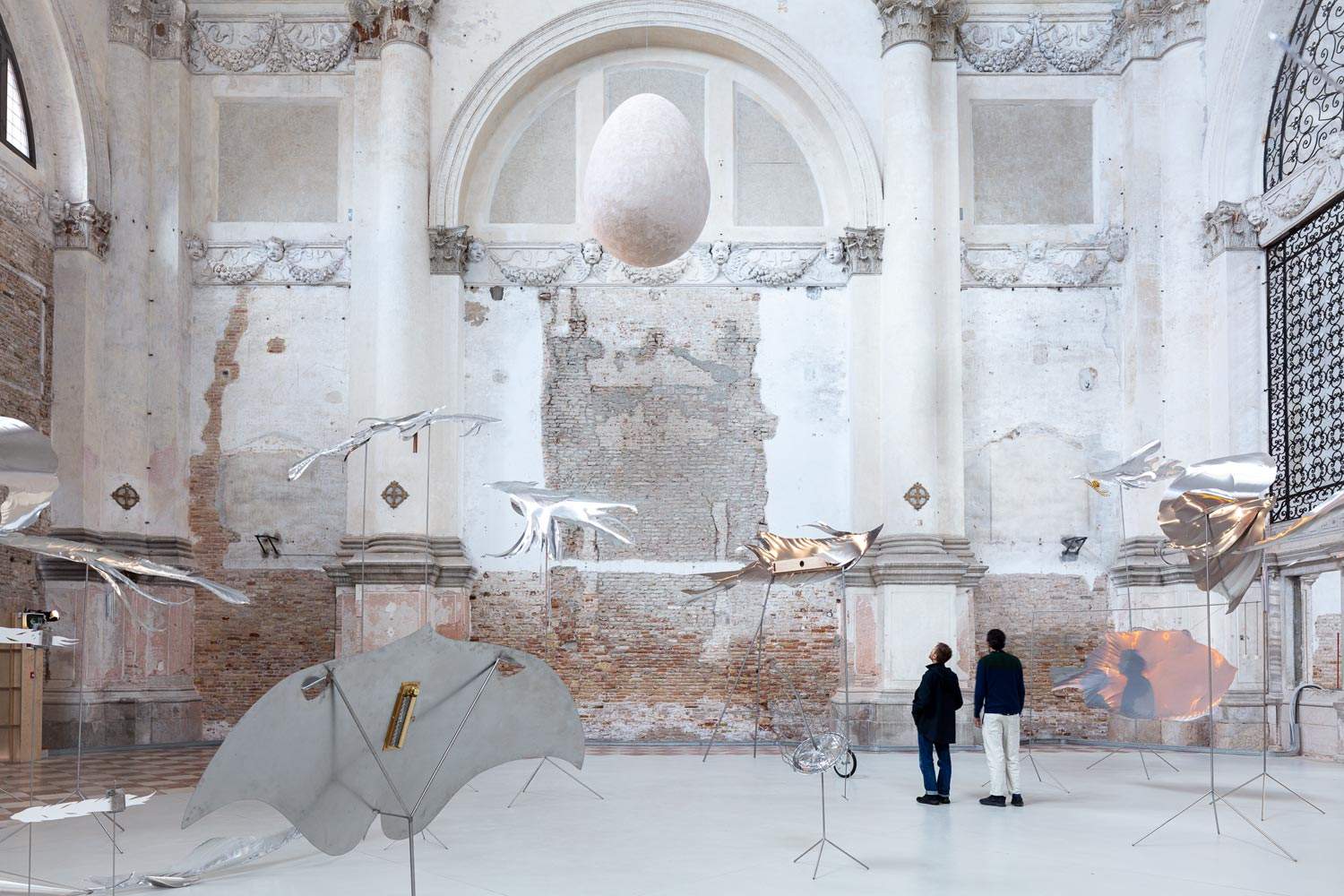 Show Thus waves come in
Show Thus waves come in Thus waves come in
Thus waves come in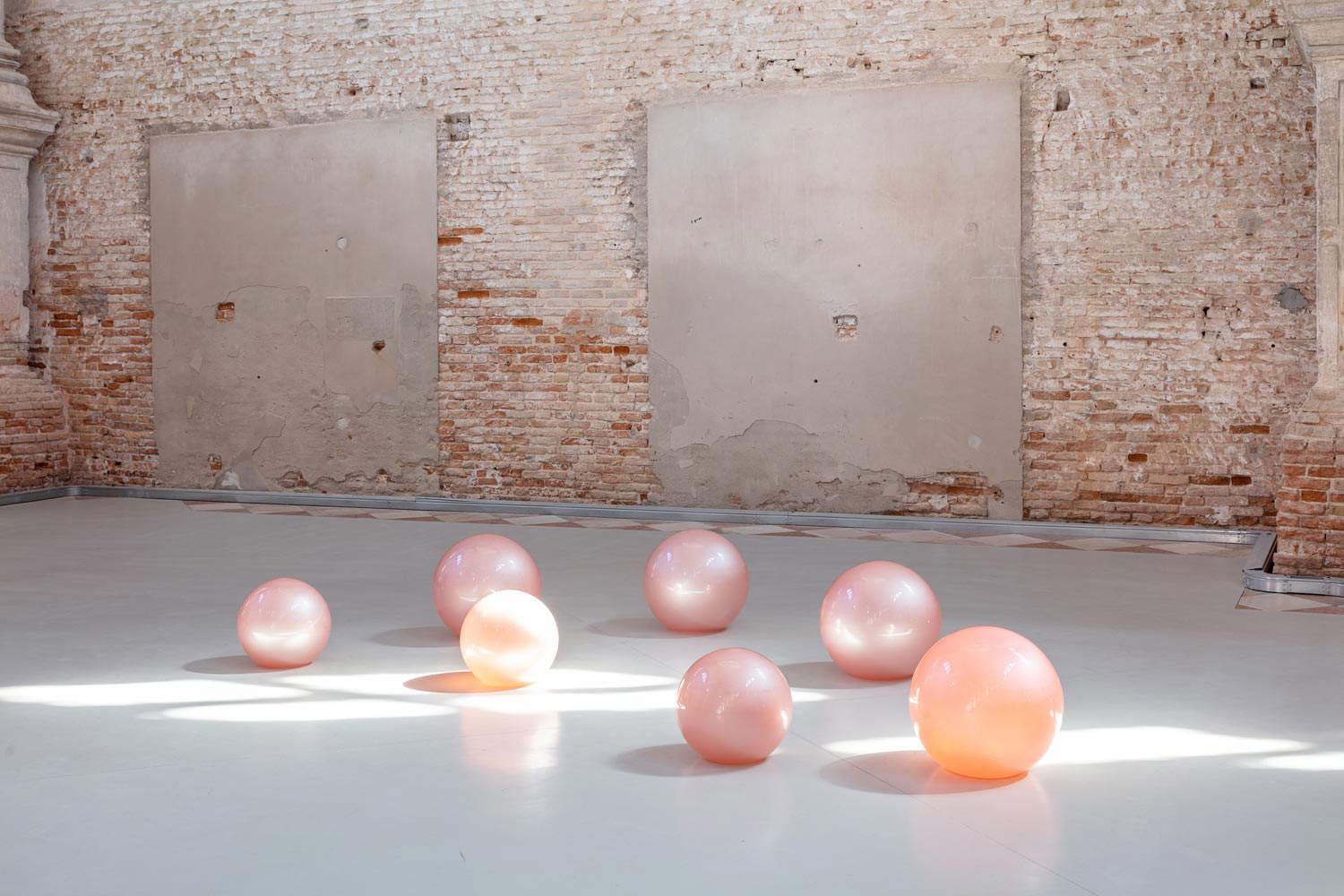 Thus waves come in
Thus waves come in Exhibit Thus waves come in
Exhibit Thus waves come in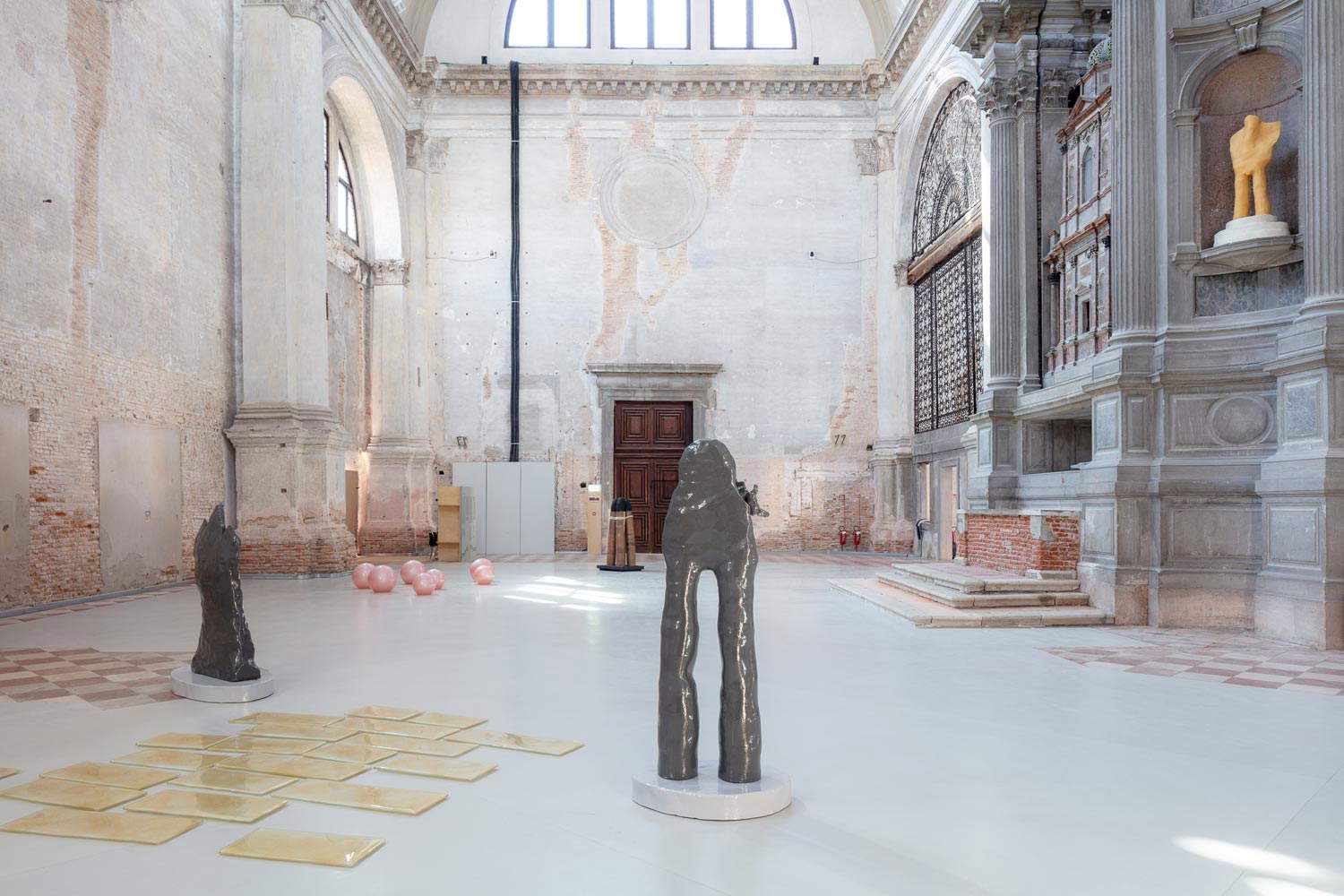 Show Thus waves come in
Show Thus waves come in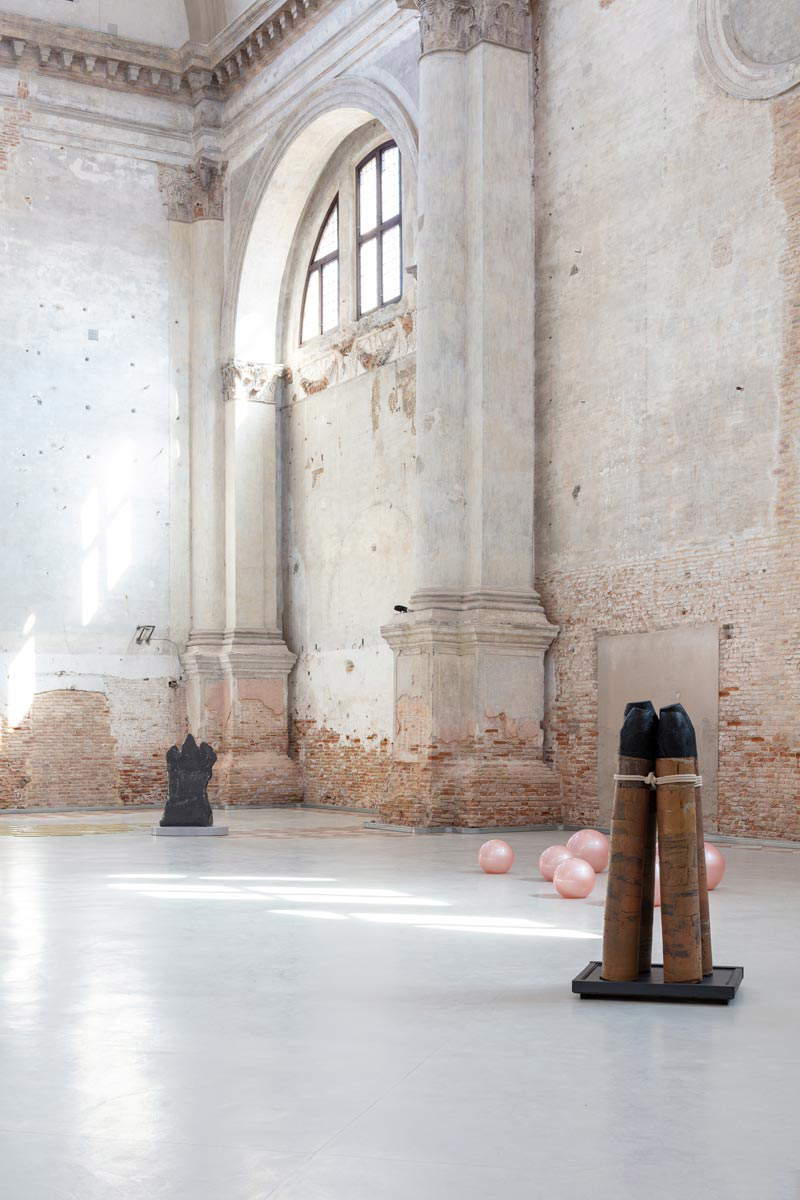 Show Thus waves come in
Show Thus waves come in
 |
| Venice, 3 artists fill an old church with dreamlike installations on climate change |
Warning: the translation into English of the original Italian article was created using automatic tools. We undertake to review all articles, but we do not guarantee the total absence of inaccuracies in the translation due to the program. You can find the original by clicking on the ITA button. If you find any mistake,please contact us.